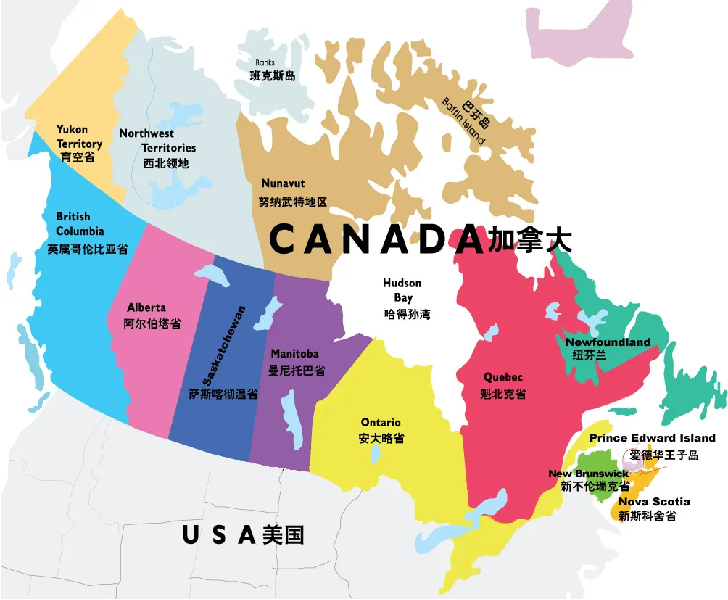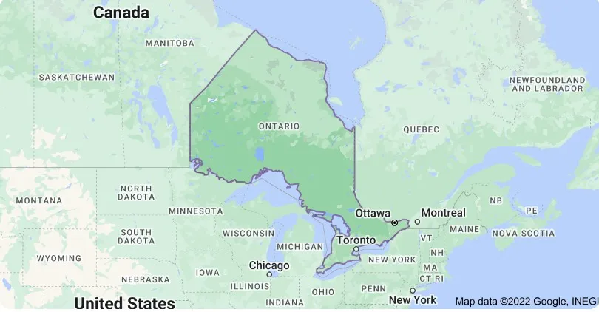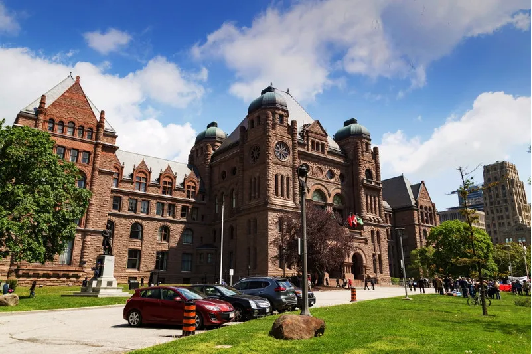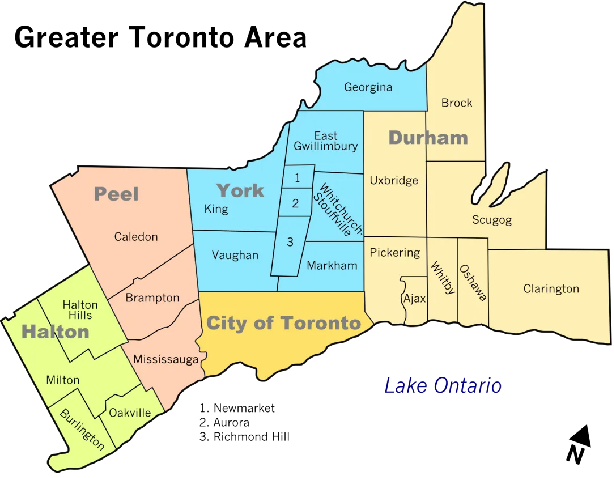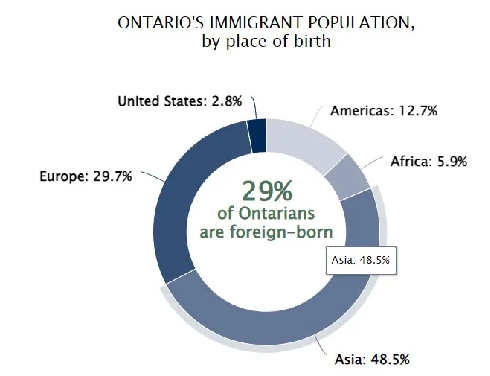Study in Canada | All About Ontario
Canada is made up of ten provinces and three territories. Ontario is located in east-central Canada between the Great Lakes, bordered by Manitoba to the west, Quebec to the east, and embedded in the United States to the south, where it is bordered by the states of Minnesota, Michigan, Ohio, Pennsylvania and New York. Ontario is located in the heart of North America, with vast tracts of land and lakes stretching from the mineral-rich north to the farms and vineyards of the south, and a dense urban corridor stretching east-west along the U.S.-Canada border.
Ontario is one of Canada’s largest provinces and has the country’s most advanced economy and largest number of universities. Ontario’s capital is Toronto, Canada’s largest city, and Ottawa, Canada’s capital, is located in southeastern Ontario.
Ontario covers an area of 1,068,000 square kilometres and has a population of about 15 million, or about 38.5 per cent of the country’s population, making it the most populous province in Canada. At the same time, Ontario is also a very important economic centre in North America, and is the first province of Canada’s economy, with Ontario’s total GDP accounting for 39% of the entire Canadian gross national product. It ranks sixth among North American provinces and states in terms of economic output, surpassing any of the Nordic countries, such as Belgium and Switzerland, and its manufacturing and financial industries are among the most developed in the country.
Ontario is one of the world’s most famous tourist destinations for its natural beauty. Its most distinctive feature is the gorgeous scenery of the Great Lakes, where the extensive waters, lakeside scenery and rich animal ecology attract many tourists to visit.
In addition, Ontario has many other natural attractions, such as Niagara Falls, the Algonquin Goldfields, and Pointe Blanche, all of which have their own unique charms and attract travellers from all over the world to come here to explore.
Ontario has a long history and cultural heritage dating back 200 years, where a wide variety of museums, parks, buildings and historical sites can be found.
Probably the most famous of these cultural monuments is Ottawa’s Parliament Hill, the most important political and cultural centre in Canada and one of the symbols of the country, where tourists can visit places such as the Parliament Buildings, St. Anne’s Cathedral, and Lawn Hill.
Ontario’s cities are very distinctive, each with its own different flavour and culture, the most famous of which is Toronto, the capital of Ontario, which is located at 43 degrees north latitude, the same latitude as Changchun, China, and has distinct seasons throughout the year. With the tallest skyscrapers, the most famous shopping malls and museums, Toronto is a place where you can enjoy modern conveniences to the fullest.
Ottawa, the capital of Canada, is located at 45 degrees north latitude, the same latitude as Harbin, China. In addition to Toronto and Ottawa, there are many very interesting small towns and cities, such as Kingston, Niagara Falls City and other places, each with its own unique cultural heritage and historical myths.
Ontario Economy
Canada is a country with uneven economic and cultural development. As the most economically developed province in Canada, Ontario is the financial centre of Canada. In terms of GDP, Ontario has been the top province in Canada for many years. It occupies 40% of Canada’s population and is rich in economic, cultural and educational resources.
As Canada’s top economic province, Ontario’s GNP accounts for 39 per cent of the country’s total. It ranks sixth among North American provinces and states in terms of economic output, ahead of Belgium, Switzerland and any of the Nordic countries.
Ontario’s capital city, the Toronto area, is the heart of Canada’s financial industry and the third largest financial centre in North America. As Canada’s largest city, Toronto is second to none in terms of job opportunities, economic growth and ease of living. Five of Canada’s six largest domestic banks and the largest insurance company are headquartered in Toronto. The Toronto Stock Exchange is the third-largest in North America and the seventh-largest in the world, with the second-largest number of publicly traded companies in the world, and the largest number of mining and resource companies in the world. In terms of the proportion of people employed in the financial sector, Toronto is tied with Zurich, Switzerland for first place in the world, with 8.5 per cent of all jobs in the industry.
Ontario’s science and technology industry is concentrated in the cities of Markham, Waterloo and Ottawa. It is also the largest biomedical research centre in North America, having successfully produced the world’s first childhood meningitis vaccine, and Banting and Best was the first discoverer of insulin.
Ontario’s industrial manufacturing, concentrated in the southeastern urban belt, is the industrial centre of Canada. Major products include automobiles, steel, food, electrical appliances, machinery, chemicals and paper, with automotive assembly and parts manufacturing being Ontario’s mainstay.
Ontario is also home to one of the most dynamic and collaborative innovation ecosystems in the world, with the regional corridor from Toronto to Waterloo being one of the global centres of talent, growth, innovation and discovery, and this 100-plus kilometre corridor being the second largest technology cluster in North America.
Education in Ontario
The quality of education in Canada has been ranked number one in the world for many years, and Ontario is the jewel in the crown of a quality Canadian education system that has been ranked as one of the best. According to statistics, there are 23 universities in Ontario. Six of Canada’s top 10 universities are located in Ontario, namely University of Toronto, McMaster University, University of Waterloo, Weston University, Queen’s University and University of Ottawa.
Ontario’s high school curriculum system, OSSD, is one of the most advanced secondary school curriculum systems in the world, and is also the most authoritative “non-tested” education system in the world, OSSD is recognised by all universities around the world, including the United States, the United Kingdom, Canada, Australia, New Zealand, Singapore, Hong Kong, China, etc., and is the common diploma for entering the world’s top universities.
Diverse Ontario
Ontario’s population of 14.95 million is about 39 per cent of Canada’s entire population (38.53 million.) 29 per cent of Ontario residents are foreign-born immigrants, and this percentage is as high as 49 per cent in Toronto. Of the new immigrants admitted to Canada each year, about 50 per cent choose to settle in Ontario. Canada has a Chinese population of about 1.8 million, of which about 850,000 live in Ontario, accounting for nearly half of the country.
Toronto is a melting pot of cultures with approximately 49 per cent of its residents being immigrants from more than 100 nationalities from around the globe and more than 140 languages spoken. With no racial discrimination, a very low crime rate, a pleasant environment, and a high quality of life, Toronto is also the wealthiest city in North America and one of the wealthiest cities in the world, having been ranked in the top 10 of the world’s wealthiest cities for many years.
Recognised as one of the top 25 cities in the world to live and work in 2023, Toronto is among the top 25 cities in the world for its diversity and education. The diversity of Toronto’s people, its economic stability and opportunities, and the education of those who live in it are the main reasons why it received this prestigious honour. Globally, Toronto is a leading tourist destination after London, Paris, New York, Dubai and Barcelona.
One of the things that permeates everything that happens in Toronto – from food, to art, to innovation, to science or business – is “this sense of hybridity” that allows people with different backgrounds and experiences to combine them to create something new. together to create something new.
The Government of Ontario is committed to working with ecosystem partners, business and academic institutions to create the right conditions to stimulate new innovation, enhance development opportunities and create good jobs in Ontario.
Ontario’s economy is diverse, with strengths in financial services, automotive manufacturing, mining, nuclear power, transportation, aerospace, information and communications, food processing, life sciences, tourism, environmental protection, agriculture and more. Ontario is the best place to live and work in Canada!


